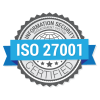As our journey through the Mastering Procurement Data series progresses, we’ve explored the indispensable role of unifying your procurement data into one source of record and the transformative power of equipping your team with analytics and taxonomies that help drill the most relevant insights from the data you collect. These steps set the stage for our culminating discussion: Implementing effective workflows that can bring value to your business. This final chapter is where theory meets practice, enabling procurement teams to apply their newfound knowledge and tools in a structured manner that revolutionizes procurement operations.
In this instalment, we shift our focus to the operationalization of insights derived from a unified data source and sophisticated data analysis. After equipping your team with the necessary skills in analytics and understanding of taxonomies, the critical next step is embedding these capabilities into your procurement workflows to action all the opportunities found. This integration is key to achieving a seamless, efficient, and strategically driven procurement process.
So, what should you focus on when creating these workflows? With these three key aspects, you’ll be able to create effective workflow processed and action the optimization opportunities your team has found for ultimate results to your business:
-
- Use Clarity & Flexibility in the Workflow Designs
-
- Guarantee Strategic Alignment with Business Needs & Consistent Feedback from Stakeholders
-
- Rely on Technology Integration for Tracking and Execution of Opportunities Found
We’ll go over them in a bit more detail below.
Use Clarity & Flexibility in the Workflow Designs
Effective workflows are the backbone of a strategic procurement process, ensuring operations are streamlined, transparent, and adaptable to ever-changing business needs. So the essence of a well-designed workflow lies in its clarity and flexibility. To action opportunities found from insights of the data collected by your team, the workflow process must be comprehensible, allowing team members across the organization to grasp the steps it presents, the benefits it will bring to the business and be able to engage with the data effectively.
Yet, the workflow process must also retain the flexibility make adaptations and changes, recognizing that not every insight will necessitate immediate action or that the process may need adjustments along the way as new data comes into play.
Guarantee Strategic Alignment with Business Needs & Consistent Feedback from Stakeholders
Ensuring that your workflow processed are in perfect harmony with your organization’s strategic goals is paramount to be able to convert the insights found into actionable savings and optimization opportunities. This alignment guarantees that the workflows triggered support broader business objectives so your team isn’t sent into a wild goose chase looking for cost reductions or other optimization actions that would not have the support of the higher-ranking executives of the organization.
Another important aspect to consider when creating these workflows is to make sure you address potential challenges in implementing them across the business, such as resistance to change known processes, data integration issues, and technology adoption barriers. Offer practical solutions and best practices to overcome these challenges, ensuring a smooth transition. If your stakeholders are not using these workflows properly, you won’t be able to effectively get the results you need. Encouraging input from various stakeholders enables the continuous improvement of these processes, ensuring they remain aligned with organizational goals and keeping employees engaged and adopting the proposed measures, resulting in effective outcomes for the business.
Rely on Technology Integration for Effective Tracking and Execution of Opportunities Found
When designing the workflow, being able to automate routine tasks which will simplify processes and save your team time may come a long way to getting champions and adopters of the new process. Utilize the right technology platforms that can support the workflow process with reliable (& data backed) steps, reducing risk and enhancing value to the process.
Look for tools that enhance data visibility, facilitate communication and collaboration, and automate data-driven decisions. Regular tracking and quantification of the workflows’ impact not only demonstrate the procurement function’s value but also highlight areas for further enhancement. If these tools already have workflow processes embedded in them, you’ve struck gold, as the work is already done for you!
Implementing Effective Workflows: Practical Steps
Once the three key aspects to creating the workflows are clear and understood, it’s time for action. So, what do to first?
-
- Establish Clear Guidelines: Develop concise decision-making guidelines that are easily accessible to all team members and are also developed with enough flexibility to adapt to changes as needed. These guidelines will serve as the framework for executing procurement strategies derived from data insights.
-
- Design with Automation in Mind: Integrate automation for repetitive tasks within your workflows, reducing the potential for human error and freeing up your team’s time for strategic analysis. Using a technology platform like Thinking Machine, which already has workflow processes embedded into the offering would take care of that for you.
-
- Review and Optimize the Workflows regularly: Commit to the ongoing evaluation of your workflows. As business strategies evolve and market dynamics shift, your workflows must adapt to remain effective and aligned with your organization’s goals.
Streamlined workflows minimize manual errors, conserve time, and foster better collaboration across departments. They ensure the necessary tasks are being done effectively to execute all opportunities that are found from the in-depth insights raised by your team. The end result is a procurement process that not only contributes to the bottom line but also positions the organization for strategic success, consistently promoting cost savings opportunities and eliminating inefficiencies and redundancies for the company.
Now, with this final step in our series, procurement professionals are equipped with a comprehensive strategy to revolutionize their operations. From unifying data sources and mastering analytics and taxonomies to implementing effective workflows, these steps are designed to elevate the procurement function to a strategic cornerstone of the business. As we conclude our series, remember that the journey towards procurement excellence is ongoing. The landscape of data and procurement is ever evolving, requiring a commitment to continuous learning, adaptation, and innovation.
As you reflect on the insights shared across this series, consider the steps your organization can take to begin this transformative journey. For those ready to take action and leverage the full potential of their procurement data —we invite you to book a strategy call with us. Let’s discuss how Thinking Machine can provide the insights and efficiencies you’ve been seeking. It’s time to turn data into one of your most strategic assets and allow the advanced analytics of our platform to reveal opportunities that have been hidden in plain sight.
To start your journey with Thinking Machine, please reach out to us at sales@thinkingmachine.co. Together, we can build a legacy of efficiency, savings, and strategic success in your procurement operations.


